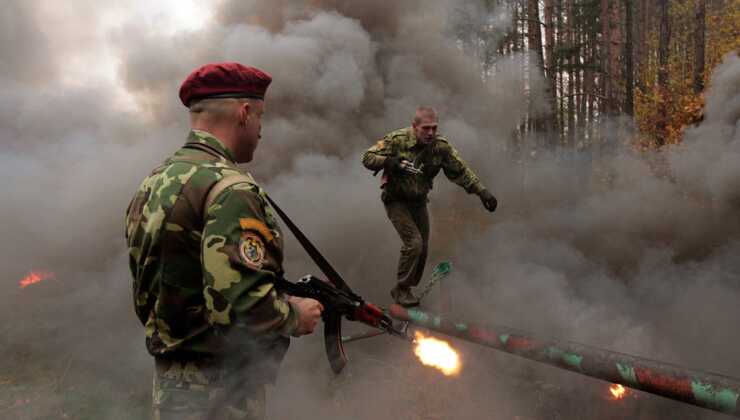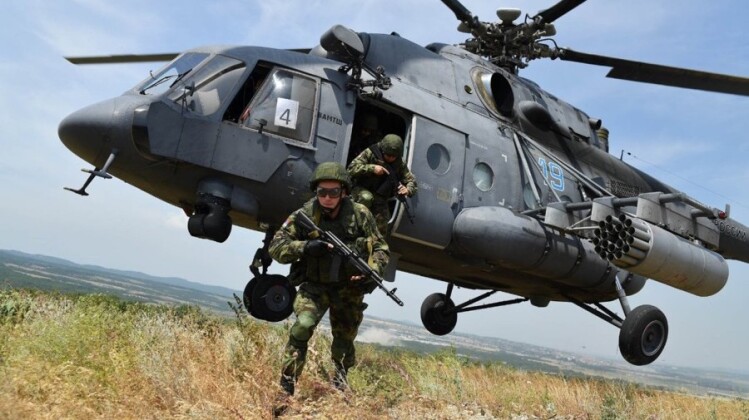As Russian and Ukrainian forces and their various external supporters continue to focus attentions on a struggle for the city of Kherson, which both countries now claim as their own territory, the possibility has increasingly been raised by analysts on all sides that a new front against the Ukrainian Military could be opened on its northern border by neighbouring Belarus. As Russia’s only military ally in Europe, Belarus has provided logistical support for the Russian war effort since its outbreak and seen its bases host both Russian aircraft and air defence systems which have participated in the war. Officials in Minsk have also indicated that Russian military action was necessary to preempt a Ukrainian and NATO threat to Belarus’ security, with Kiev having subsequently threatened missile strikes on the country and reportedly launching some warheads over the border.
Belarus saw a buildup of Russian assets on its territory from January before hostilities began the following month. Although the country remains a frontier with hostile NATO powers, most notably Poland which has drastically increased investment in modernising its army since the beginning of the year, the support of growing numbers of Russian assets either being transferred to its armed forces or being based on its territory has taken some pressure off its small military and could allow it to divert some forces to tackle the Ukrainian Army with Russian air support. An evaluation of the Belarusian Army’s capabilities is thus highly relevant to the ongoing Russian-Ukrainian War and highlights the potential viability, or lack of it, of opening a northern front.

The Belarusian Army has a relatively small frontline manpower of just 11,700 personnel, although this figure belies the much larger manpower that is available in the event of war. The Belarusian Air Force deploys a further 11,300 personnel, with 18,800 more deployed under joint forces. This combined with 6,000 special forces provides 48,000 active personnel in total. The bulk of Belarus’ active manpower, however, is formed by 110,000 paramilitaries, which could potentially bear a greater share of the burden of territorial defence should the bulk of the military be deployed for operations in Ukraine. Additionally, Belarus’ system of conscription means that approximately 300,000 reservists with military service in the past five years can be called up in the event of war. Although training and logistics are geared primarily for territorial defence, the size of the ground forces with reservists could still allow a contingent of well over 100,000 to be deployed offensively against Ukraine, although signs of a full scale calling up of reserves would likely be observed beforehand. While Ukraine currently has several million personnel in its armed forces and affiliated paramilitaries, estimated by some sources at over 6 million, the majority are recent conscripts who are not considered well trained or equipped. Those units operating away from the frontlines are thus expected to be outmatched by their generally better prepared Belarusian counterparts.

Although the Ukrainian Military has been much maligned for its lack of investment in post-Soviet equipment, with its 1970s T-64 tanks being a notable example and having seen negligible upgrades made, much the same has been true for the Belarusian Military which has similarly seen few improvements to its Soviet-era inventories. Although Belarus does field over 100 T-72B3 tanks, which are superior to any armour in frontline service in Ukraine, the Ukrainian Army has relied heavily on handheld anti tank weapons such as the U.S.-supplied Javelin to compensate for its inferior armour. Russian Army T-72B3s using older Kontakt-5 explosive reactive armour have already proven vulnerable to these missiles. Belarus lacks more survivable tanks such as the T-90M, and most of its armoured units are formed of much less survivable T-72Bs from the Soviet era which are comparably obsolete to Ukraine’s T-64Bs. Nevertheless, with Ukrainian armour increasingly depleted and concentrated in the east, softer units deploying older tanks such as the M-55 and smaller quantities of anti tank missiles may be relied on to cover the northern border.
Belarus deploys significant artillery assets including small numbers of Polonez rocket artillery systems which were developed with support from Chinese technology transfers, and represent perhaps the only area where its inventory has a notable qualitative edge over that of Russia. Supplemented by its not insignificant tactical ballistic missile arsenal, and by mobile air defence systems such as the indigenous BuK-MB3K, Belarusian forces may well be able to compensate for their lack of numbers with greater firepower due to the bulk of Ukraine’s artillery being focused in the east of the country and much of its ballistic missile arsenal already having been expended. Although the Belarusian Army is not well suited to an offensive operation southwards, robust air defences and support from Russian aircraft may still allow its intervention to tip the balance in Ukraine due to the already very high strain the Ukrainian Army is under and the diversion of its most capable forces and assets far to the east. A Belarusian buildup on its border alone, without actually committing to the fight, could well have a significant impact with the threat of intervention potentially stretching Ukrainian assets further to strengthen forces to the north.
